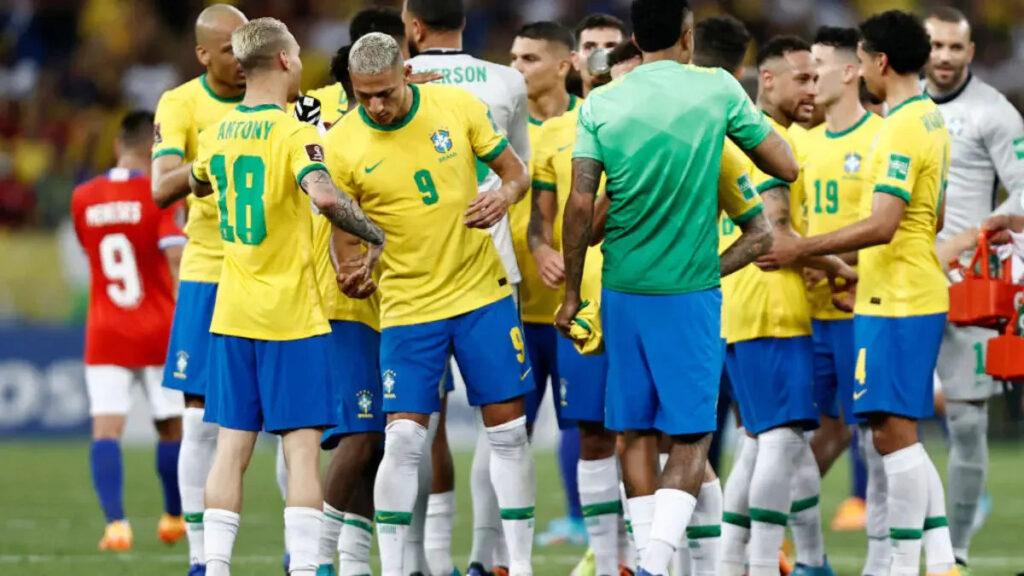
The Brazilian national soccer team gathers in a huddle during a match, showcasing their teamwork and camaraderie.
Breaking Down Barriers: The Hidden Challenge of Language in College Soccer
The beautiful game speaks a universal language, but in American college soccer, players aren’t always speaking the same one. As international recruitment continues to reshape collegiate athletics, language barriers have emerged as an unexpected obstacle that can make or break team chemistry, affect coaching effectiveness, and ultimately impact on-field performance.
With international students continuing to enroll in U.S. colleges in strong numbers, soccer programs nationwide are increasingly diverse. While this brings world-class talent to American pitches, it also creates communication challenges that coaches and players must navigate carefully.
The Scope of the Challenge
College soccer teams today often resemble mini United Nations assemblies. A typical Division I roster might include players from Brazil, Germany, Nigeria, Japan, and dozens of other countries. Each brings unique technical skills and tactical understanding shaped by their home country’s soccer culture. However, they also bring varying levels of English proficiency that can impact everything from understanding tactical instructions to building friendships off the field.
The challenge extends beyond simple language translation. Soccer has its own vocabulary that varies by region—what Americans call a “field” might be a “pitch” to British players, while Brazilian players might struggle with American coaching terminology that differs from Portuguese football expressions. These nuances can lead to confusion during critical moments in training or matches.
Impact on Team Dynamics
Communication forms the backbone of successful soccer. Players must constantly communicate positions, mark assignments, and coordinate pressing triggers. When language barriers exist, these essential on-field conversations can break down, leading to defensive lapses or missed attacking opportunities.
Research on communication barriers in educational settings provides insight into how these challenges manifest. According to studies published in Communication Studies and Speech Communication Journal, communication barriers significantly impact professional perception and credibility. In the soccer context, this can affect how international players are viewed by coaches and teammates, potentially limiting their playing time or leadership opportunities.
Off the field, language barriers can create social isolation. International players may struggle to form connections with teammates, missing out on the camaraderie that builds championship teams. As noted in a Duke Chronicle report on student experiences, language barriers often make students “rely a lot on each other for social connection,” which can lead to international players clustering together rather than integrating fully with the team.
Coaching Complications
For coaches, language barriers present unique challenges in implementing tactical systems and providing individual feedback. Complex tactical concepts that require nuanced understanding become difficult to communicate when players have varying levels of English comprehension. A coach explaining a high-pressing system or positional play concepts may find that instructions get lost in translation, leading to inconsistent execution on the field.
The challenge intensifies during matches when coaches need to make quick tactical adjustments. Halftime team talks and in-game instructions require clear, concise communication that leaves no room for misinterpretation. When players struggle to understand these critical messages, it can cost teams valuable points.
Academic and Eligibility Concerns
Beyond the soccer field, international players must navigate American academic systems while maintaining NCAA eligibility requirements. Language barriers can make coursework more challenging, potentially affecting grade point averages and eligibility. This adds another layer of stress for players already adjusting to new cultural environments and competitive soccer demands.
The recent data showing a 17% decline in new international student enrollment could signal future challenges for soccer programs that rely heavily on international recruitment. As the international student landscape shifts, programs may need to invest more resources in language support to maintain their competitive edge.
Solutions and Success Stories
Progressive soccer programs have begun implementing innovative solutions to address language barriers. Some universities now employ multilingual assistant coaches or student translators to help bridge communication gaps during training. Others have developed buddy systems pairing international players with American teammates to facilitate both language learning and cultural integration.
Technology also plays an increasing role, with translation apps and video analysis software helping coaches communicate complex tactical concepts visually rather than verbally. These tools allow international players to understand systems through demonstration rather than explanation alone.
Looking Ahead
As college soccer continues to globalize, addressing language barriers will become increasingly critical for program success. The teams that invest in comprehensive language support and cultural integration programs will likely gain competitive advantages in recruiting and player development.
The challenge of language barriers in college soccer reflects broader questions about diversity and inclusion in American collegiate athletics. While these barriers present real obstacles, they also offer opportunities for growth, cultural exchange, and innovation in coaching methods. Programs that successfully navigate these challenges don’t just build better soccer teams—they prepare student-athletes for an increasingly interconnected world.
For soccer fans watching their favorite college teams, understanding these behind-the-scenes challenges adds depth to the game. That perfectly executed play might represent not just athletic skill, but also the successful bridging of language and cultural divides. In this context, every goal scored and every clean sheet kept becomes a testament to communication triumphs that extend far beyond the soccer field.

